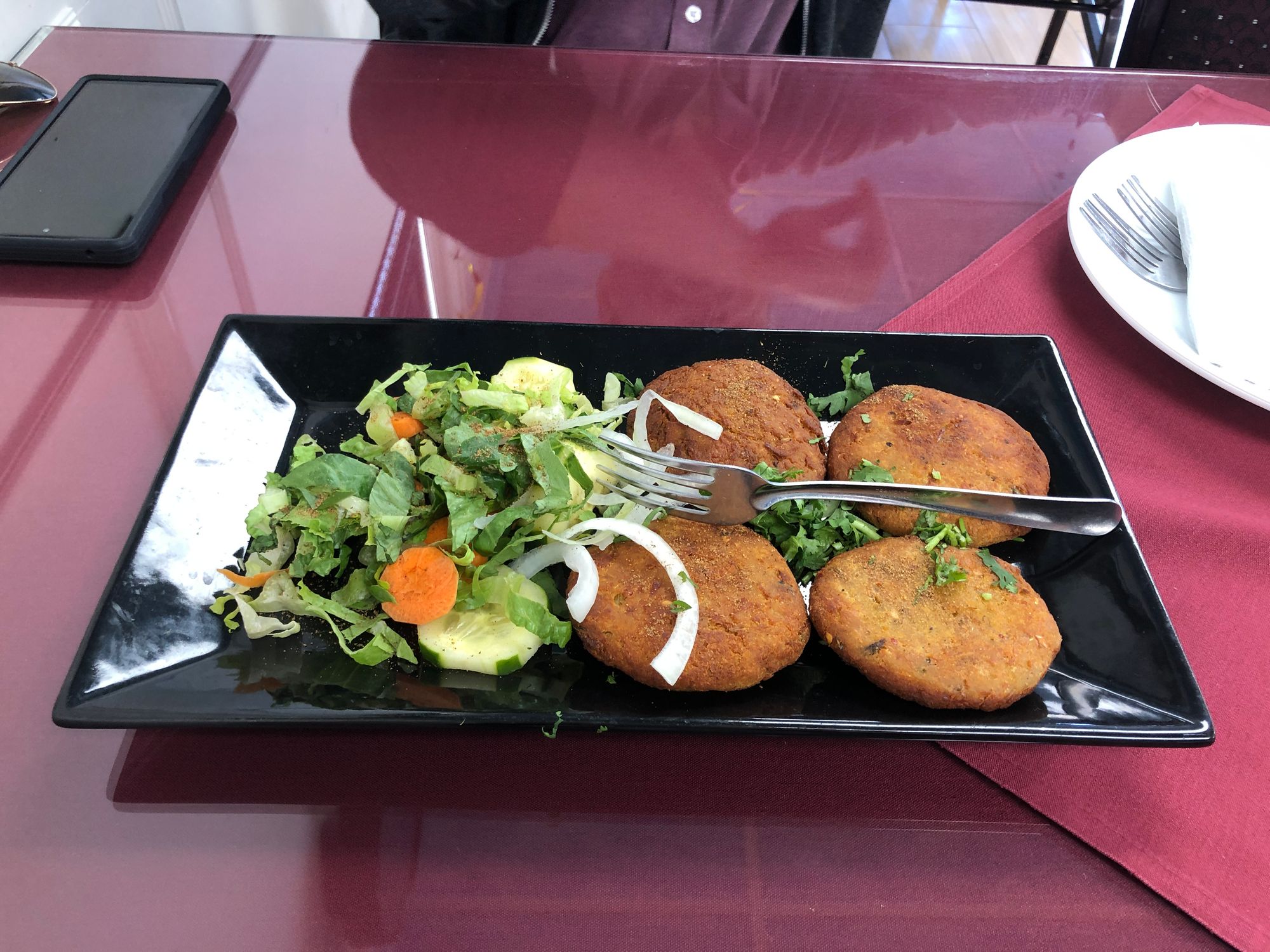Review: we found kabobs in a quiet place
As this is my first review, I want to clarify that I’m not always going to be so effusive. But this restaurant is just incredible.

Thank you for reading How to Eat L.A. Going forward, restaurant reviews will be behind a paywall, so please subscribe!
There’s a menu item at Halal Kabob House called “shrimp curry.” It’s a must-order for me, but it’s not always the same dish. I asked the guy who seems to be the manager why it’s sometimes different.
“Some nights the Pakistani chef is here, and some nights the Mexican chef is.”
And there you go.
Visitors often misunderstand L.A. and come away unimpressed, thinking that the soul of the city is in its upscale corners and being disappointed when they don’t have much fun there. It takes more than one weeklong visit to understand that the best of Los Angeles isn’t flashy at all. For example, Halal Kabob House is in a strip mall. Locals know those are where all the best food is made. This nondescript restaurant is an exception in only one way: Halal Kabob House’s food is world-class excellent.
As this is my first review, I want to clarify that I’m not always going to be this effusive. But Halal Kabob House is just incredible.
This particular strip mall is near LAX, and HKH makes an excellent point on its Facebook page: “Don’t settle for airport food.” Imagine picking up a visitor and taking them to what is possibly the best South Asian food in L.A. County. They’d instantly fall in love. Maybe it’s best to bring them here for their last meal of the visit, to send them away blissed out and enamored of the city.
I am a simpleton when it comes to South Asian food: I will order only chicken tikka masala and naan unless I focus very hard on choosing something else. Well, not “something else,” but something “in addition to.” Halal Kabob House does these beginner dishes very well: chicken tikka masala, chicken qorma, and naan are all recommended without reservation. Dal tarka, another classic, is earthy and roasty, and my #1 dinner date, who’s had innumerable versions, said it was “one of the top dals I’ve ever had.”
But you’ll be even happier when you move beyond the greatest hits. The lamb biryani is heavenly - in fact, try to order as many lamb dishes as possible. HKH also has a few items made with cow brains, which are fairly hard to come by, so try them here if you’ve been looking.
I had a hard time wrapping my head around ordering a non-burger ground beef dish (scarred by a classic San Francisco dish called New Joe’s, made of spinach and ground beef, that my mom made me eat too often) but keema mutter aloo, or ground beef with peas and potatoes, was well worth the anxiety.
This restaurant has also introduced me to the wide world of kebabs. I thought there had to be a stick involved at some point for something to be a kebab. Turns out, no, the word essentially means “meat-based dish of some sort.” It’s an ancient concept - the root word might be Aramaic - and was popularized in medieval Persian and Arab cuisines. It came to South Asia via the Mughal Empire in the 1500s. (And surely it went the other way too, given that it just means meat dish.)

A great one to try at Halal Kabob House is shami kabob, made of meat and lentils formed into patties and deep fried.
The Mughal Empire (1500s-1800s) didn’t just bring food to South Asia, of course. It united much of the subcontinent into one “India,” from Afghanistan to Bangladesh, and integrated Muslim culture into the area on a larger scale than ever before. Some rulers forced non-Muslims to convert, while others were progressive about religious freedom.
There’s a phrase on Halal Kabob House’s to-go menu and scattered across its minimal social media: “Food has no boundaries.” I always wonder if that’s a reference to Partition (which I mostly know about because of the articles submitted by Indian freelancers over at Smart Mouth), which happened when many different powers with different agendas decided that a border needed to be instituted in northern India, creating one (well, two at the time) Muslim-dominated area and one Hindu-dominated one. It was discussed for years and then happened in a snap, and hundreds of thousands, if not millions, of people died due to an international lack of foresight. It created almost endless tension between India and Pakistan. What the Mughals created, modern politics tore apart.
(Partition is extremely nuanced and I am not an expert, but there are plenty of resources for learning more. As it happens, the TV program Ms. Marvel does a great job showing Partition in action, though not everyone agreed with the series’ perspective.)
So, obviously, the food of Pakistan is quite similar to northern Indian food, which is popular in the U.S. But Halal Kabob House is usually pretty empty. I’m assuming it’s because Pakistan-specific restaurants are an unknown quantity to many folks in Southern California. But it should be more popular.
If you do Halal Kabob House right you’ll be too full for dessert, but luckily the halwa and gulab jamun and ras malai are pre-packaged in to-go containers, so you can continue the Pakistani bonanza at home. Sweet tooth or not, you’ll remember this meal.
—1117 W. Manchester Blvd., Inglewood, CA 90301. (310) 641-4435. halalkabobhouse.com.
Thank you for reading How to Eat L.A. Going forward, restaurant reviews will be behind a paywall, so please subscribe!
